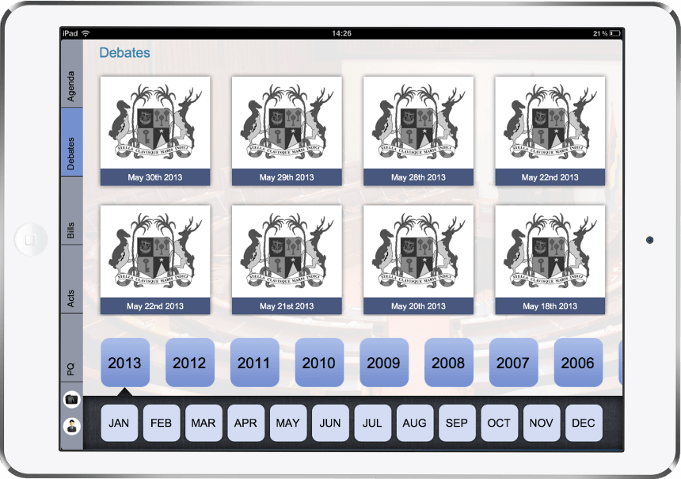The 70 member team national assembly faced a twenty-year backlog of unformatted bills and debates with cumbersome preparation time for each meeting. Deploying TABiT made it possible to cut down the formatting time by 95% and move to a paper-free environment.
Directly elected in 21 constituencies, the National Assembly of Mauritius is responsible for making laws, controlling the finances of the State and the critical role of checking the actions of government and the Ministries.
Over the years, all national debates have been recorded on tapes and digitized. The biggest challenges faced were formatting the digitized files into high fidelity professional layouts and making them easily accessible for use at subsequent assemblies.
Over recent years, formatting has been done on all documents of the current year and an earlier year with the aim to eliminate the backlog of over 800,000 pages. With this traditional process, a 110-year timeline was looked at for completion of the task. In addition to this, each assembly meeting required a stack of documents that needed to be managed, reviewed and discussed.
A TEDIOUS PROCESS
The National Assembly meets 40 to 52 times in a year. Each member is handed a stack of documents prior to the meeting for review and preparation.
This includes the agenda, bills, private and public questions including other documents, adding up to over a couple of thousand pages per meeting per member. The Printouts were delivered to each of the members for review and preparation. Each error in print or organizing of these documents in the incorrect order could lead up to a few hours of rework.
Over and above that, sending out information on last-minute changes in the agenda, and delivering the updated files was a logistic nightmare.
At each meeting, the papers are laid on the table, questions are asked and answers listed on the Order Paper are dealt with. This is followed by the introduction of Public Bills which are read out and debated upon. All details are recorded during the meeting. The recordings are then heard and typed out in Microsoft Word.
The final and most tedious process is the merging of multiple word files and formatting the content in high-quality page layout software – from the Table of Content links to tables and lists.
CASE STUDY
Mauritius Research Repository: A centralised repository that helped the MRC foster
Paper free, hassle-free, with automation at its best
Moving from hours of printing, stacking, checking, re-printing, binding and delivering documents to a simple process of placing the required PDFs on a central server is what TABiT achieved. Members no longer have to carry and handle a stack of papers, mark reviews on paper, worry about mismanaged, misplaced documents or last-minute agenda changes.
All documents are available instantly on the Apple® iPad® of each member.
Moving to a seamless digital solution gives access to documents anytime from anywhere. The inbuilt annotation features of TABiT made it easy to review files and save comments. Searching for a specific file or viewing archived debate information is now available at a touch of the screen. Members are now more prepared for debates with their new found flexibility.
After each session, once the recordings are transcribed, TABiT simplifies the layout formatting process by automatically merging the multiple Microsoft® Word® files and laying them out in QuarkXPress®. Formatting and creating headers, footers, style sheets, bullets, tables, numbered lists and generation of the Table of Contents follows a highly automated process.
The merge function for multiple files allowed the layout team to see the overlapping text and tweak it to smoothen out creases. Readers are now able to look at just the highlighted bits and correct a few sentences at each merge point instead of toggling between documents to ensure the copy-paste is correct.
Making the high fidelity layout includes
- Automated Table of Contents creation with links to the resultant page numbers.
- Formatted bullets and numbering – including nested lists – are indented and spaced correctly.
- Headers and footers matching with the content on the respective pages.
- Tables were laid out with the correct indents and spacing.
Formatting the content into professional layouts used to take up to four days for a single debate. The use of TABiT dropped the time taken to a few minutes.
The benefits
Reducing the file merge time from hours to minutes is the first real benefit in terms of time-saving. One of the expected results of using TABiT was to clear our twenty-year backlog in an estimated 12 months. With the powerful engine and embedded logic, TABiT enabled formatting of all 800,000 pages in less than 3 months. The complete streamlined process has an estimated saving of thousands of man-hours and hundreds of thousands of dollars every year.
That’s efficiency at its best!

